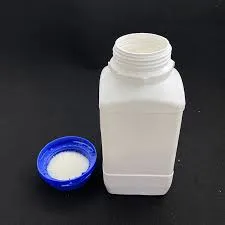Chemicals Used in Water Treatment
Water treatment is an essential process that ensures the availability of safe and clean water for consumption and various applications. The treatment process varies depending on the source and quality of the raw water, but it typically involves several stages, including coagulation, sedimentation, filtration, and disinfection. Throughout these stages, various chemicals are used to remove contaminants and improve water quality. Here, we will explore the primary chemicals used in water treatment and their functions.
1. Coagulants
Coagulation is often the first step in the water treatment process. It involves adding chemicals called coagulants to the water to facilitate the aggregation of suspended particles. The most commonly used coagulants include
- Aluminum Sulfate (Alum) This is the most widely used coagulant, which works by neutralizing the charge on particles, allowing them to clump together and form larger aggregates known as flocs. These flocs can then be removed through sedimentation or filtration.
- Ferric Sulfate An alternative to alum, ferric sulfate is especially effective in removing organic matter and color from water. It can also work in a wider pH range than alum, making it suitable for various water sources.
- Polyaluminum Chloride (PAC) This coagulant is used in many modern water treatment facilities due to its effectiveness at lower doses and better performance in a variety of water chemistries.
2. Flocculants
After coagulation, flocculants are sometimes added to enhance the aggregation of particles. Flocculants are polymers that can bridge between particles, promoting larger floc formation and improving settling rates. Commonly used flocculants include
- Polyacrylamides These synthetic polymers enhance floc formation and are effective in treating low turbidity water. They can be tailored to specific water conditions, making them versatile for different treatment applications.
- Natural Polymers Such as starch or chitosan, are increasingly being used as environmentally friendly alternatives to synthetic flocculants.
3. Disinfectants
what chemicals are used in water treatment

Once the water is clarified, it must be disinfected to eliminate harmful microorganisms. Several disinfectants are commonly used, including
- Chlorine One of the most common disinfectants, chlorine is effective against bacteria and viruses
. It is easy to use and relatively inexpensive but can react with organic matter in the water to form harmful by-products known as trihalomethanes (THMs).- Chloramine Formed by combining chlorine with ammonia, chloramine is often used as a secondary disinfectant to provide long-lasting protection in the water distribution system, reducing the formation of THMs.
- Ozone Ozone is a powerful oxidant that can effectively kill bacteria and viruses. It also breaks down organic pollutants without leaving harmful residues, making it an attractive option for advanced water treatment systems.
- Ultraviolet (UV) Light UV disinfection is a chemical-free method that uses ultraviolet radiation to inactivate microorganisms. It is increasingly popular for its efficiency and lack of chemical by-products.
4. pH Adjustment Chemicals
The pH of water plays a crucial role in its quality and treatment efficiency. Therefore, pH adjustment chemicals are often added during the treatment process. Commonly used chemicals include
- Hydrochloric Acid (HCl) and Sodium Hydroxide (NaOH) These chemicals are used to lower or raise the pH of the water, respectively, ensuring that the water is within optimal ranges for coagulation and disinfection.
5. Corrosion Inhibitors
To protect the infrastructure of water distribution systems and prevent contamination, corrosion inhibitors are added. Chemicals such as phosphates and silicates are commonly used to form protective layers on pipe surfaces, minimizing corrosion and leaching of metals into the water.
Conclusion
The use of chemicals in water treatment is vital for ensuring the provision of safe, clean, and palatable water. Each chemical plays a unique role in various stages of treatment, contributing to the overall effectiveness of the process. As advancements continue in water treatment technologies and environmental concerns grow, the industry is also exploring more sustainable and eco-friendly alternatives to traditional chemical agents. This evolution aims to ensure that water treatment remains effective while minimizing potential risks to public health and the environment.

